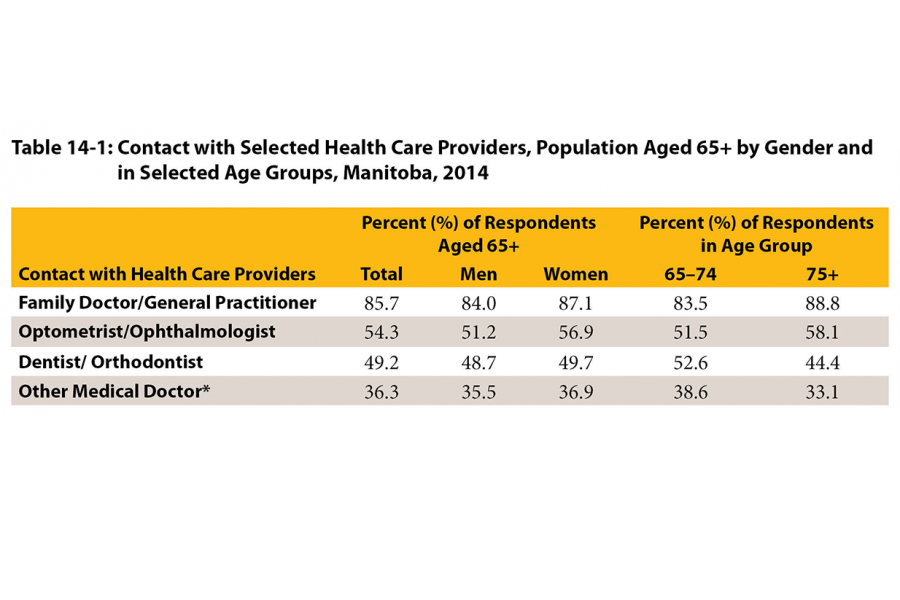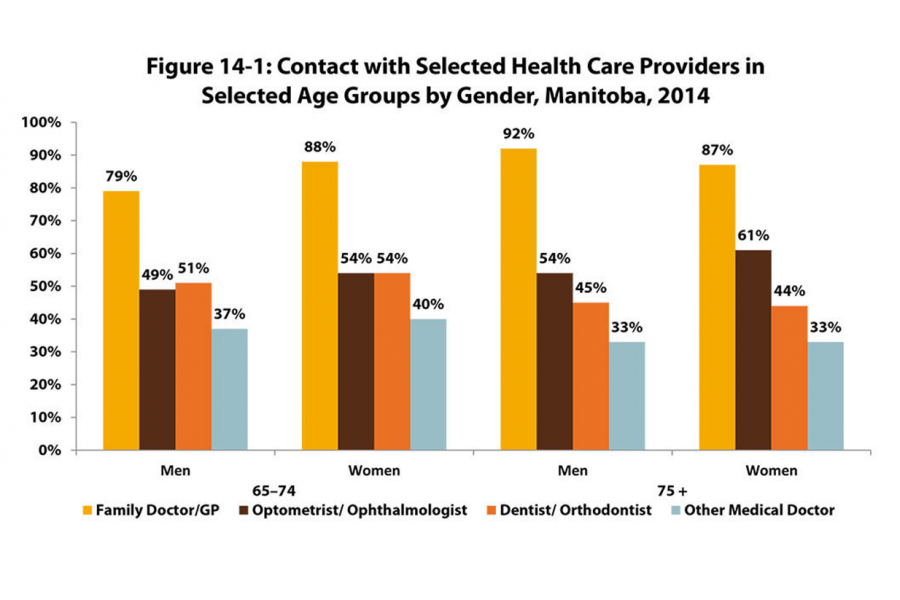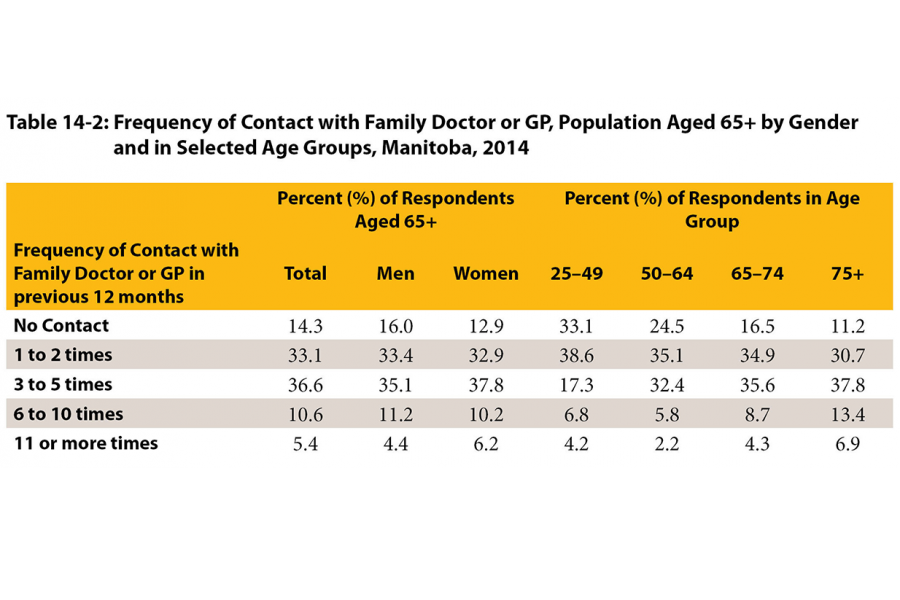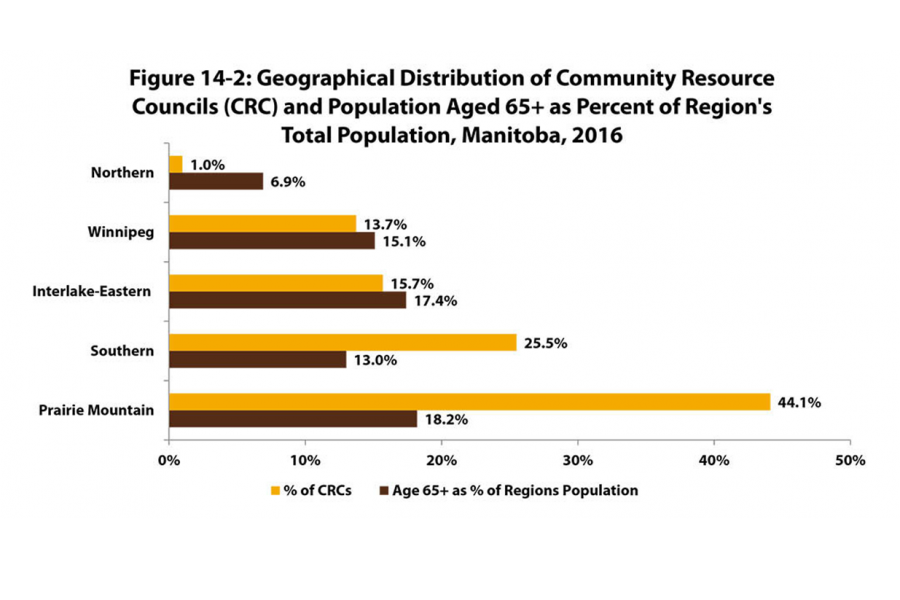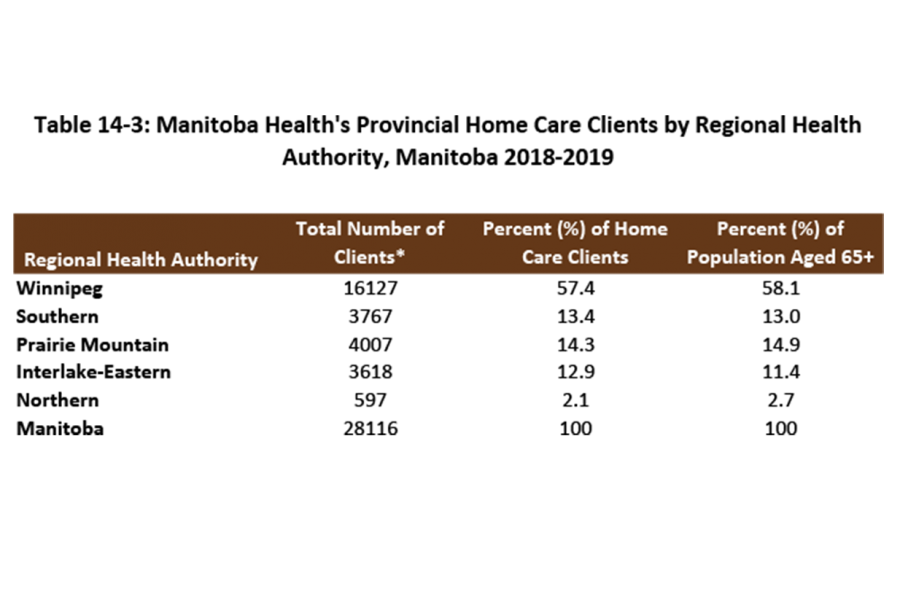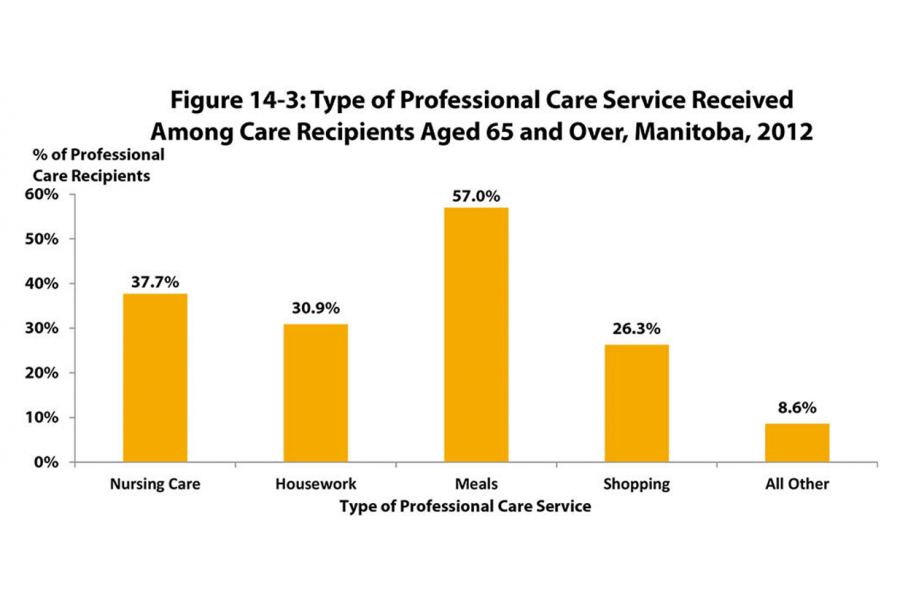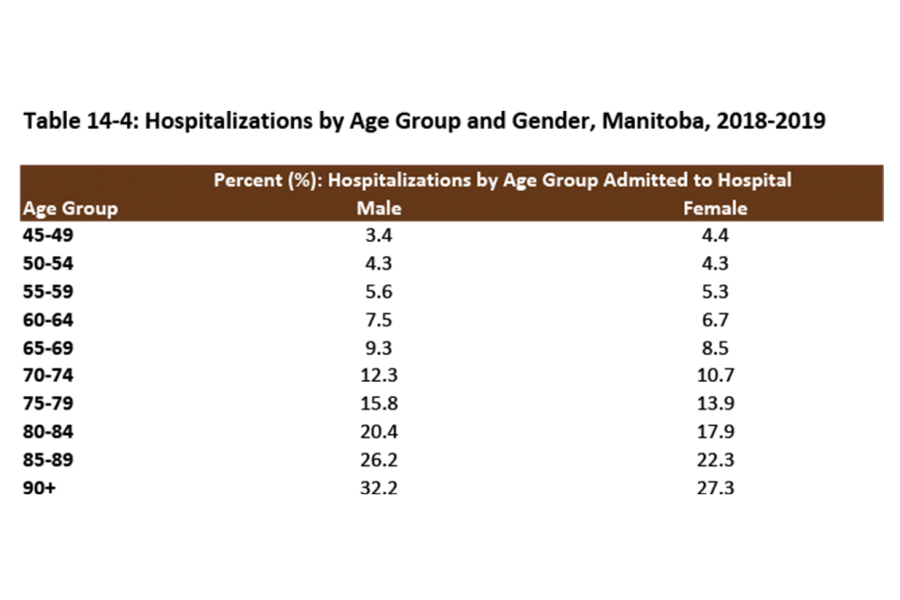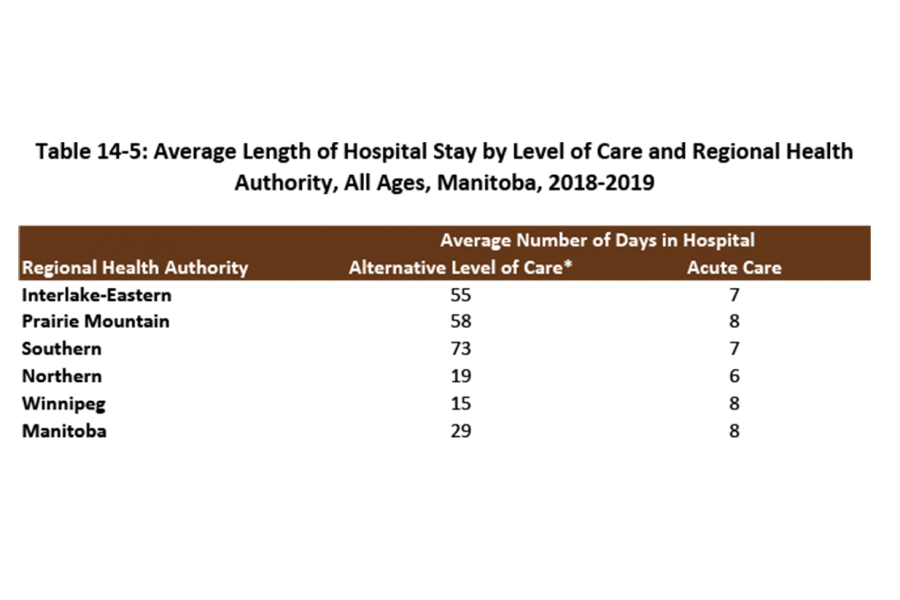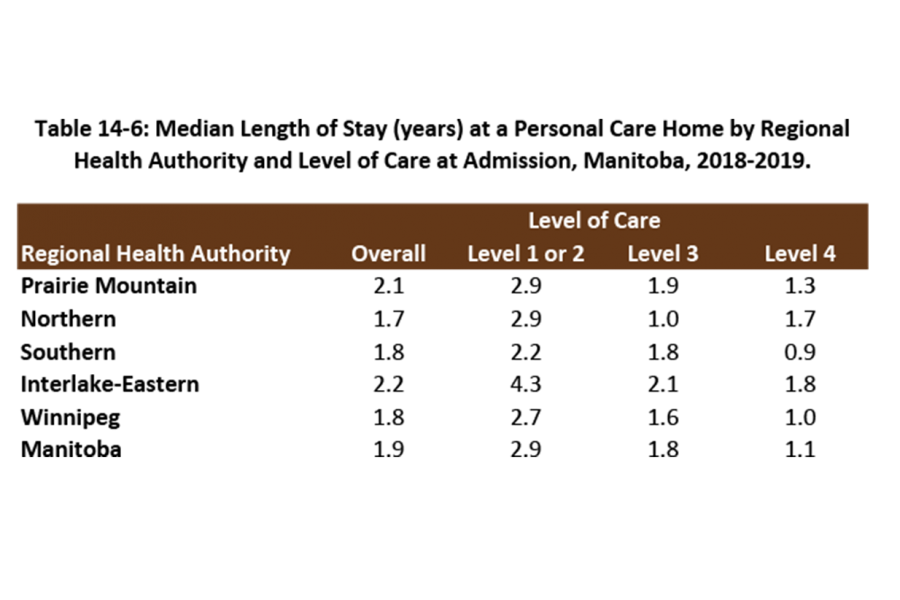Health care and community services
The health care and community services section provides information on how older persons use formal health care services/resources such as visits to a physician, hospitalizations, home care services, and personal care homes.
On this page
- Contact with health care providers
- Manitoba Support Services to Seniors program
- Manitoba home care program
- Hospitalizations
- Average length of hospital stay
- Manitoba personal care home map
- Manitoba personal care homes
- Resources
Available in alternate formats upon request.
Contact with health care providers
Download file
Contact with health care providers (PowerPoint)
*Includes surgeon, allergist, orthopedist or psychiatrist
Less than 15% had contacted chiropractors, physiotherapists, nurses for care/advice, social workers/counsellors, speech, auditory or occupational therapists or psychologists.
Source: Statistics Canada, 2014. Canadian Community Health Survey, Public Use Microdata File.
Download file
Contact with selected health care providers (PowerPoint) | Contact with selected health care providers (Excel)
Source: Statistics Canada, 2014. Canadian Community Health Survey, Public Use Microdata File.
Download file
Contact with family doctor (PowerPoint)
Source: Statistics Canada, 2014. Canadian Community Health Survey, Public Use Microdata File.
Manitoba Support Services to Seniors Program
Download file
Community resource councils (PowerPoint) | Community resource councils (Excel)
Sources: Manitoba Health (2017). Seniors Resource Councils in Manitoba. Manitoba Seniors and Healthy Aging Secretariat.
Manitoba Health, Seniors and Active Living. Manitoba Population Report, June 1, 2016.
Note: Seniors Community Resource Councils (CRC) are non-profit community based organizations located throughout Manitoba. They offer a variety of programs within the community that support the independence of older adults such as: seniors congregate meal programs; seniors transportation programs; information and referral; health and wellness programs; home maintenance programs; and emergency response information kits.
Manitoba home care program
Download file
Home care clients served (PowerPoint)
*Manitoba Health provides data on all home care clients including those under 65, however most home care clients (72%) are 65+1
1 Toews, R. 2016. Future of Home Care Services in Manitoba, Government of Manitoba, Minister of Health Seniors and Active Living.
Source: Manitoba Health (2018–2019). Manitoba Health, Seniors and Active Living, 2018–2019 Annual Statistics Report. Figure 88.
Manitoba Health. Manitoba Health, Seniors and Active Living, Population Report, June 1, 2019.
Download file
Home care services received (PowerPoint) | Home care services received (Excel)
Note: Nursing Care includes personal care tasks and help with medical treatments.
All Other includes emotional support, scheduling and coordinating care, financial help, and any other type of help.
Source: Statistics Canada, 2012. General Social Survey - Caregiving and Care Receiving, Public Use Microdata File.
Hospitalizations
Download file
Manitobans hospitalized (PowerPoint)
Source: Manitoba Health (2016-2017). Manitoba Health, Seniors and Active Living, 2018–2019, Annual Statistics Report, Figure 64.
Average length of hospital stay
Download file
Average length hospital stay (PowerPoint)
*Alternative Level of Care (ALC) is when a patient no longer requires the level of care of a hospital but remains in hospital while awaiting discharge to an appropriate non-acute care setting such as a personal care home.
Source: Manitoba Health (2016–2017). Manitoba Health, Seniors and Active Living, 2018-2019 Annual Statistics Report, Figure 70.
Manitoba Personal care home map
Download file
Personal care home map (PowerPoint)
Map of personal care homes in Manitoba by regional health authority
Source: Management & Analytics branch of Manitoba Health, Seniors & Active Living Manitoba Health (2018–2019). Manitoba Health, Seniors and Active Living Annual Statistics 2018–2019, p. 72.
Manitoba personal care homes
Download file
Length of stay personal care home (PowerPoint)
Note: Level 1 represents the lowest level of care needed, and Level 4 represents the highest.
Table 14-6 is based on median length of stay for residents aged 75 and older.
Source: Manitoba Health (2018–2019). Manitoba Health, Seniors and Active Living, 2018–2019 Annual Statistics Report, Table 5.
Resources
The State of Seniors Health Care in Canada (PDF)
A report from the Canadian Medical Association

